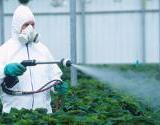Main Menu
Common Pesticides
Pesticides are chemical and biological agents that are used to kill or repel pests. They include insecticides, which kill or repel insects; fungicides, which control fungi and mold; herbicides, which are used on plants to control insect or mold damage; antimicrobials, which work on viruses and bacteria; and rodenticides, which poison rats and mice. All of these substances can have harmful effects on humans, especially children, and all of them have the potential to end up on food, in water, and in the home.
Malathion
Malathion is a common pesticide. It became famous in the 1980s when it was used to control fruit fly infestations, and it was also used in the early 2000s to try to stop the spread of West Nile virus. Today, it shows up in strawberries and blueberries, and also in celery: a 2008 study revealed that detectable levels of malathion could be found in 28% of frozen blueberry samples, 25% of fresh strawberry samples, and 19% of celery samples.
Chlorpyrifos and methyl parathion
Chlorpyrifos and methyl parathion are two commonly used insecticides. In a 2004 study by the Centers for Disease Control (CDC), researchers took blood and urine tests from people, and found that 100% of these tests showed residues of these two insecticides. The levels of these residues were up to 4.6 times greater than the levels deemed acceptable by the US government.
Endosulfan
The pesticide endosulfan was recently banned in 173 countries through the Stockholm Convention: it had previously been used to keep pests off coffee, chocolate, cashew and cotton plants. India was one of the countries that agreed to ban endosulfan: agricultural workers on cashew plantations in Kerala were reporting that their children were suffering from birth defects and developmental delays. Women were discovering that they’d become infertile. The dangerous pesticide was sprayed by hand rather than by plane or helicopter, increasing workers’ direct exposure to it.
Another common pesticide, atrazine, is found in 94% of US drinking water. It causes hormonal disruption and is banned in Europe.
This information is solely for informational and educational purposes only. The publication of this information does not constitute the practice of medicine, family planning, child psychology, marriage counseling and this information does not replace the advice of your physician or other health care or mental health care provider. Neither the owners or employees of NaturalFamilyOnline.com or the author(s) of site content take responsibility for any possible consequences from any treatment, procedure, exercise, dietary modification, application of medication or any other action involving the care of yourself or any family members which results from reading this site. It is always best to speak with your primary health care provider before engaging in any form of self treatment. Additional information contained in our Legal Statement


